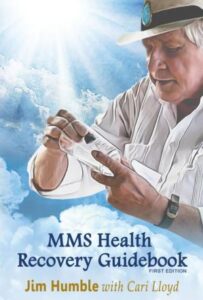U.S. Buys Millions of Monkeypox Vaccines As Massachusetts Man Infected
The U.S. government has ordered millions of doses of a vaccine that protects against monkeypox. The news follows the first confirmed case in the states—a man in Massachusetts—following an outbreak in the U.K. MONKEYPOX Virus US orders millions of MONKEYPOX Vaccines
Dr David Martin Exposes The Entire Plandemic, A Criminal Conspiracy To Harm, Maim & Kill Humans?
The order amounts to a $119 million order for Jynneos vaccines, which are used for the prevention of both smallpox and monkeypox. It was announced by biotechnology company Bavarian Nordic, which makes the vaccine, on Wednesday. MONKEYPOX Virus US orders millions of MONKEYPOX Vaccines
The order will convert bulk vaccines, which have already been made and invoiced under previous contracts with the U.S. government, into freeze-dried versions which have an improved shelf-life.
The total government contract with Bavarian Nordic amounts to $299 million, which would provide 13 million freeze-dried doses.
Health officials have confirmed more than 250 cases across 16 countries, most of them in Europe. The U.K., Spain and Portugal have reported most cases of infection with the virus, which typically causes fever, rash and swollen lymph nodes. In the U.S., the Centers for Disease Control and Prevention said on Monday it had confirmed one case of monkeypox in Massachusetts and is reviewing four cases from New York, Utah and Florida that it presumes are monkeypox. On Tuesday, California said it was working with the agency to investigate an additional suspected case.
Monkeypox cases outside the endemic region are very rare, typically brought to non-endemic countries by people coming from that area. Last year, for instance, the U.S. had two cases of monkeypox imported by travelers who had been to Nigeria, according to the CDC.
Monkeypox symptoms
The illness begins with:
- Fever.
- Headache.
- Muscle aches.
- Backache.
- Swollen lymph nodes.
- Chills.
- Exhaustion.
How does a person get monkeypox?
Monkeypox — what is it?
Monkeypox was first discovered in 1958 in monkeys, although they are not the source of the virus. It was first identified in humans in 1970.
The virus is particularly prevalent in Central and West Africa and is considered a rare zoonotic disease, which means that it is caused by germs that spread between animals and people.
Monkeypox typically is spread by wild animals, such as in instances when a human is bitten or comes into contact with animal blood or bodily fluids. However, human-to-human transmission, while rare, is possible.
The virus is known to enter the human body through broken skin, the respiratory tract, or the eyes, nose or mouth, for instance through large respiratory droplets or through contact — including sexual contact — with bodily fluids or lesions, or indirectly through contaminated clothing or linens.
However, “common household disinfectants can kill it.”
A prior outbreak — the first to occur outside of the African continent — occurred in the U.S. in 2003, linked to animals shipped to Texas from Ghana.
And in July 2021, monkeypox was confirmed in a Texas individual who had returned to Dallas from Nigeria, according to the CDC.
Symptoms of monkeypox infection tend to be mild, and include fever, rash and swollen lymph nodes, and occasionally intense headache, back pain, muscle aches, lack of energy and skin eruptions which can cause painful lesions, scabs or crusts.
There are two strains of monkeypox: the West African and Central African strains. The latter is known as the deadlier of the two, but the cases identified in the recent outbreak all appear to have been caused by the milder West African strain.
Context and background
The monkeypox virus is usually found in tropical climates, especially Central and West Africa, but recent outbreaks have caused the illness to spread to 11 countries with over 80 confirmed infections.
Monkeypox usually lasts around two to four weeks and causes people to develop symptoms including fever, rash, swollen lymph nodes, and may cause future medical complications. Other symptoms can include intense headache, back pain, muscle aches, lack of energy, skin eruptions which can cause painful lesions, scabs, or crusts.
Usually the virus is spread to humans in three ways: 1. From person-to-person (through close contact with body fluids, respiratory droplets, and lesions) 2. From an animal (zoonotic spread) 3. From material that has been contaminated with monkeypox, meaning through close contact with objects like bedding and tissues where the virus is present
Monkeypox is similar to smallpox in a few ways. One is that symptoms caused by both viruses are similar and the vaccine used against smallpox, which was eradicated in 1980, has been shown to be roughly 85% effective at preventing monkeypox. In addition, an antiviral medication that was created to treat smallpox has also been licensed to treat monkeypox, which is called JYNNEOS (also known as Imvamune and Imvanex).
As Monkeypox Cases Spread, Report Shows Gates Foundation, WHO, Pharma Execs Took Part in Monkeypox Pandemic ‘Simulation’
The World Health Organization on Friday held an emergency meeting to discuss the outbreak of monkeypox after more than 100 cases were reported across 12 countries, as a report surfaced showing the Gates Foundation, WHO and Pharma execs in March 2021 conducted a monkeypox pandemic “simulation.”
The World Health Organization (WHO) on Friday held an emergency meeting to discuss the outbreak of monkeypox after more than 100 cases were reported across 12 countries.
Days before the WHO convened, the Biden administration placed a $119 million order for monkeypox vaccines after the Centers for Disease Control and Prevention (CDC) confirmed six people in the U.S. were being monitored for the viral infection, and one person had tested positive.
Belgium on Sunday became the first country to introduce a compulsory 21-day quarantine for monkeypox patients after reporting four cases of the disease in the last week, Politico reported.
The 100 newly reported cases, or suspected cases, garnered attention because many of them do not appear to be linked to travel to Africa, where in some regions, monkeypox is endemic.
Cases were reported in Australia, Austria, Belgium, Canada, Denmark, France, Germany, Greece, Israel, Italy, the Netherlands, Portugal, Spain, Sweden, Switzerland and the U.K. No deaths are reported as of yet.
The number of identified cases in Europe is a record, described by Germany’s armed forces medical services as “the largest and most widespread outbreak … ever seen in Europe,” while its spread in the U.K. was described as “unprecedented.”
U.K. public health officials warned more monkeypox cases are being detected “on a daily basis” and that there “could be really significant numbers over the next two or three weeks,” though they did not specify what “numbers” would be considered “really significant.”
The manner in which monkeypox may have spread — through sexual health services and sexual contact between men — also may have helped to heap attention on this new outbreak.
Many of the recent cases were traced to two “superspreader” events that involved situations in which men came into close physical contact, including 30 monkeypox cases in Spain traced to a single adult sauna in Madrid.
Monkeypox cases reported in Belgium appear to be connected to a recent gay “fetish festival.”
For some, these developments may bring to mind the early onset of HIV, which at the time was connected to sexual contact among males, and to remarks by Dr. Anthony Fauci that he visited gay saunas and bars during the early years of the HIV outbreak to understand how the virus was spreading.
Gates Foundation, pharma execs, WHO participated in monkeypox pandemic simulation
Who took part in the NTI’s monkeypox pandemic simulation?
Key participants included:(Click To Download PDF)
- Dr. Ruxandra Draghia-Akli, global head of Johnson & Johnson Global Public Health R&D and Janssen Research & Development.
- Dr. Chris Elias, president of the global development division of the Bill & Melinda Gates Foundation.
- Dr. George Gao, director-general of the Chinese Center for Disease Control and Prevention (the Chinese CDC).
- Dr. Margaret (Peggy) A. Hamburg, interim vice president for global biological policy and programs at NTI, a member of the global health scientific advisory committee for the Gates Foundation and a member of the board of GAVI-The Vaccine Alliance.
- Sam Nunn, a former U.S. senator who is the founder and co-chair of NTI.
- Dr. Michael Ryan, executive director of the WHO Health Emergencies Program and a highly visible figure during COVID-19 times.
- Dr. Petra Wicklandt, head of corporate affairs for Merck.
Several of the participants listed above also “participated” in Event 201.
The authors of the report also stand out for their background.
For example, Dr. Jaime M. Yassif, vice president of NTI global biological policy and programs, holds a Ph.D. in biophysics from the University of California-Berkeley and a master’s degree in science and security from the King’s College, London, war studies department.
Yassif previously led the initiative on biosecurity and pandemic preparedness at the Open Philanthropy Project, including the management of nearly $40 million in biosecurity grants, the “initiation of new biosecurity work in China and India,” and “establishment of the Global Health Security Index.”
She also previously advised the U.S. Department of Defense on science and technology policy and worked on the Global Health Security Agenda at the U.S. Department of Health and Human Services.
Co-author Chris Isaac, program officer for NTI’s Global Biological Policy and Programs team, “has been involved with synthetic biology through the Internationally Genetically Engineered Machines Competition since the start of his scientific career” and “is an alumnus of the Emerging Leaders in Biosecurity Fellowship at the Johns Hopkins Center for Health Security.”
The report is the product of a partnership between NTI, co-founded by Nunn and Ted Turner, and the Munich Security Conference.
Both NTI ($3.5 million, for “vaccine development”) and the Munich Security conference ($1.2 million) received funding from the Gates Foundation.
The report itself was funded by the Open Philanthropy project, one of whose main funders is Dustin Moscovitz, co-founder of Facebook along with Mark Zuckerberg.
Open Philanthropy, over the past decade, has provided donations and grants to the following entities and for the following purposes:
- $166.9 million for “global health.”
- $90.2 million for “biosecurity and pandemic preparedness.”
- $18 million for “global catastrophic risks.”
- $40.2 to Johns Hopkins Center for Health Security.
- $17.9 to NTI.
- $2.2 to The Guardian.
- $1.6 to Rockefeller University.
Johns Hopkins Center for Health Security at center of multiple tabletop exercisesNTI and the Munich Security Conference are not new to “tabletop exercises” — their report highlights previous simulations, including a 2019 report titled “A Spreading Plague,” and a 2020 report titled “Preventing Global Catastrophic Biological Risks.”Other simulations in the recent past, in addition to Event 201, include:- Operation Dark Winter (June 2001, less than three months before the 9/11 attacks and subsequent anthrax scare, “examining the national security, intergovernmental, and information challenges of a biological attack on the American homeland”).
- Operation Atlantic Storm (January 2005, “designed to mimic a summit of transatlantic leaders forced to respond to a bioterrorist attack”).
- The Clade X exercise (May 2018, “to illustrate high-level strategic decisions and policies that the United States and the world will need to pursue in order to prevent a pandemic or diminish its consequences should prevention fail”). Yassif helped develop the Clade X exercise.
The common denominator among all of these simulations? The Johns Hopkins Center for Health Security, which published a document titled “The SPARS Pandemic 2025-2028,” comprising “a futuristic scenario that illustrates communication dilemmas concerning medical countermeasures (MCMs) that could plausibly emerge in the not-so-distant future.”
Predictions for the future don’t end there, however. For instance, in September 2017, NTI and the WEF organized a roundtable discussion on the current state of biological risks presented by technology advancement in light of the Fourth Industrial Revolution.
And in January 2020, NTI and the WEF again joined forces, issuing a report titled “Biosecurity Innovation and Risk Reduction: A Global Framework for Accessible, Safe and Secure DNA Synthesis.”
According to the report:
“Rapid advancements in commercially available DNA synthesis technologies — used for example to artificially create gene sequences for clinical diagnosis and treatment — pose growing risks, with the potential to cause a catastrophic biological security threat if accidentally or deliberately misused.”
Merck, whose head of corporate affairs participated in the monkeypox simulation, was the subject of an FBI and CDC investigation in November 2021 regarding 15 suspicious vials labeled “smallpox” at a Merck facility in Philadelphia.
Bill Gates no stranger to predicting the future
Bill Gates has himself been remarkably prescient with his predictions of future events.
Here are some of Gates’ predictions:
- In a November 2015 TED talk, he stated “[i]f anything kills over 10 million people in the next few decades, it’s most likely to be a highly infectious virus rather than a war. Not missiles, but microbes.”
- In a 2017 speech at that year’s Munich Security Conference, he said “the next epidemic could originate on the computer screen of a terrorist intent on using genetic engineering to create a synthetic version of the smallpox virus,” arguing in favor of the merger of “health security” and “international security.”
- In May 2021, Gates said “[s]omebody who wants to cause damage could engineer a virus so that the cost, the chance of running into this is more than that of naturally-caused epidemics such as the current one … [t]he ways the humans interact with other species, these viruses are coming across the species barriers whether it’s bats or monkeys.”
- In November 2021, Gates publicly pondered, “[y]ou say, OK, what if a bioterrorist brought smallpox to 10 airports? You know, how would the world respond to that? There’s naturally-caused epidemics and bioterrorism-caused epidemics that could even be way worse than what we experienced today.”
- In February 2022, Gates warned that the next pandemic “… won’t necessarily be a coronavirus or even the flu. It is likely to be a respiratory virus. Because, with all the human travel we have now, that’s the one that can spread in such a rapid way,” emphasizing the significance of providing sufficient funds to the private sector and academia to build better vaccines, therapeutics and diagnostics.
- Earlier this month, Gates called for the development of a so-called “Global Epidemic Response and Mobilization” (GERM) initiative, stating that present WHO funding was “not at all serious about pandemics” and that $1 billion a year would be needed to operate this initiative.
- Also this month, the Bill & Melinda Gates Foundation announced “a new financial commitment of up to US$125 million to help end the acute phase of the COVID-19 pandemic and prepare for future pandemics,” with much of the money going toward “strengthening health systems in low-income countries, enhancing integrated disease monitoring, expanding access to pandemic tools, and helping countries manage COVID-19 alongside other pressing health needs.”
- In his new book, “How to Prevent the Next Pandemic,” Gates argues that, despite COVID fatigue, the world must focus on preparing for future pandemics, regardless of whether a disease is circulating.






